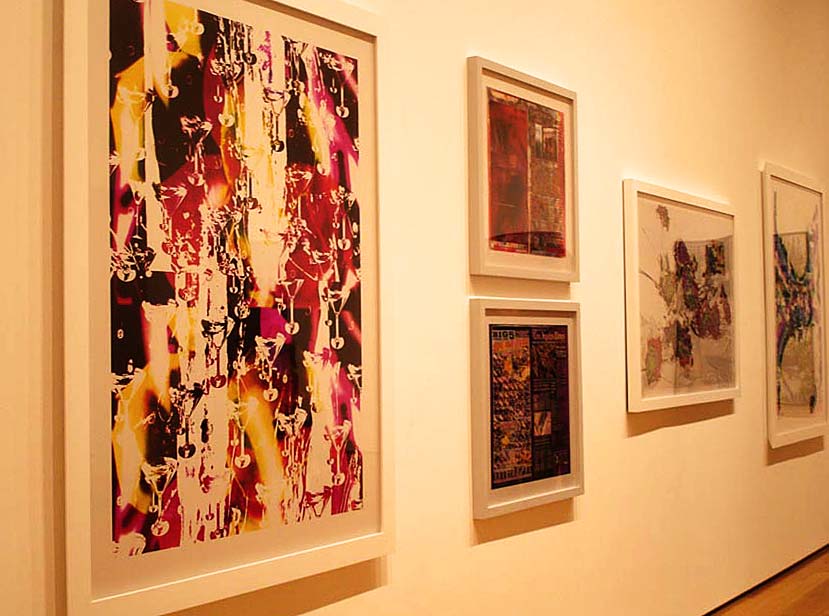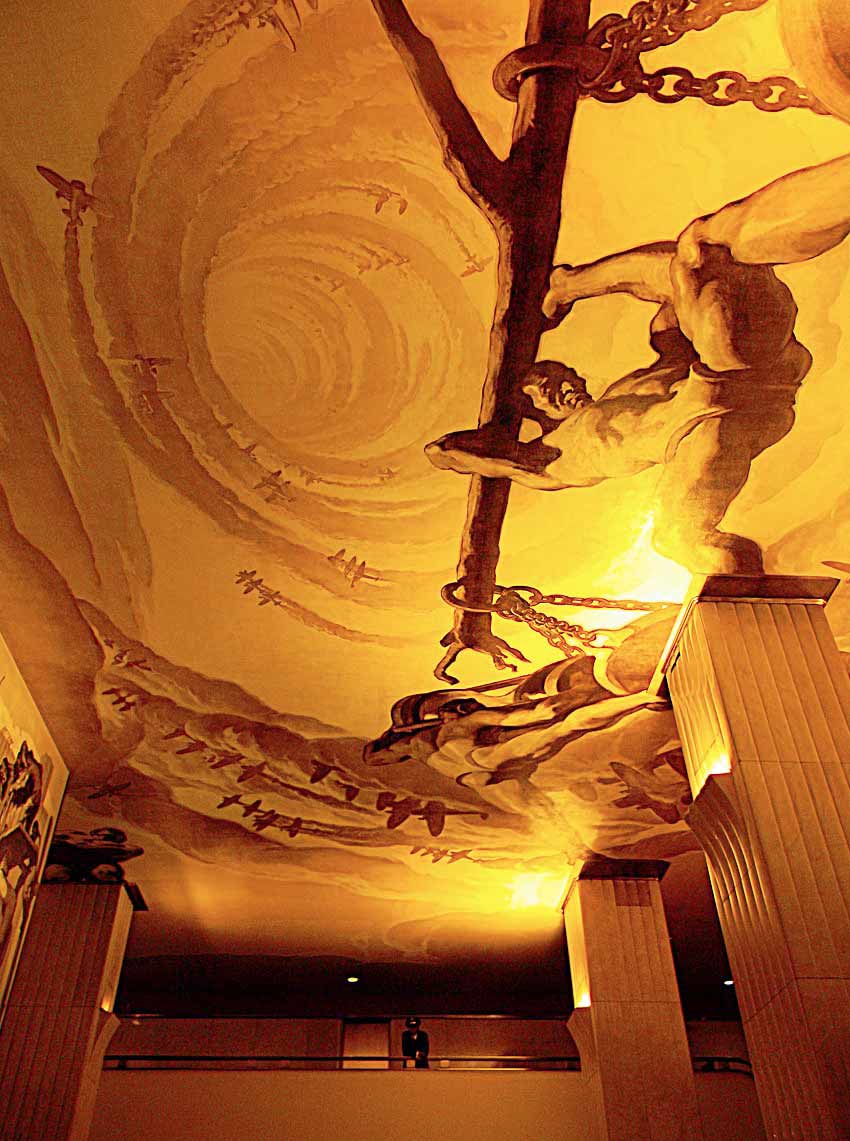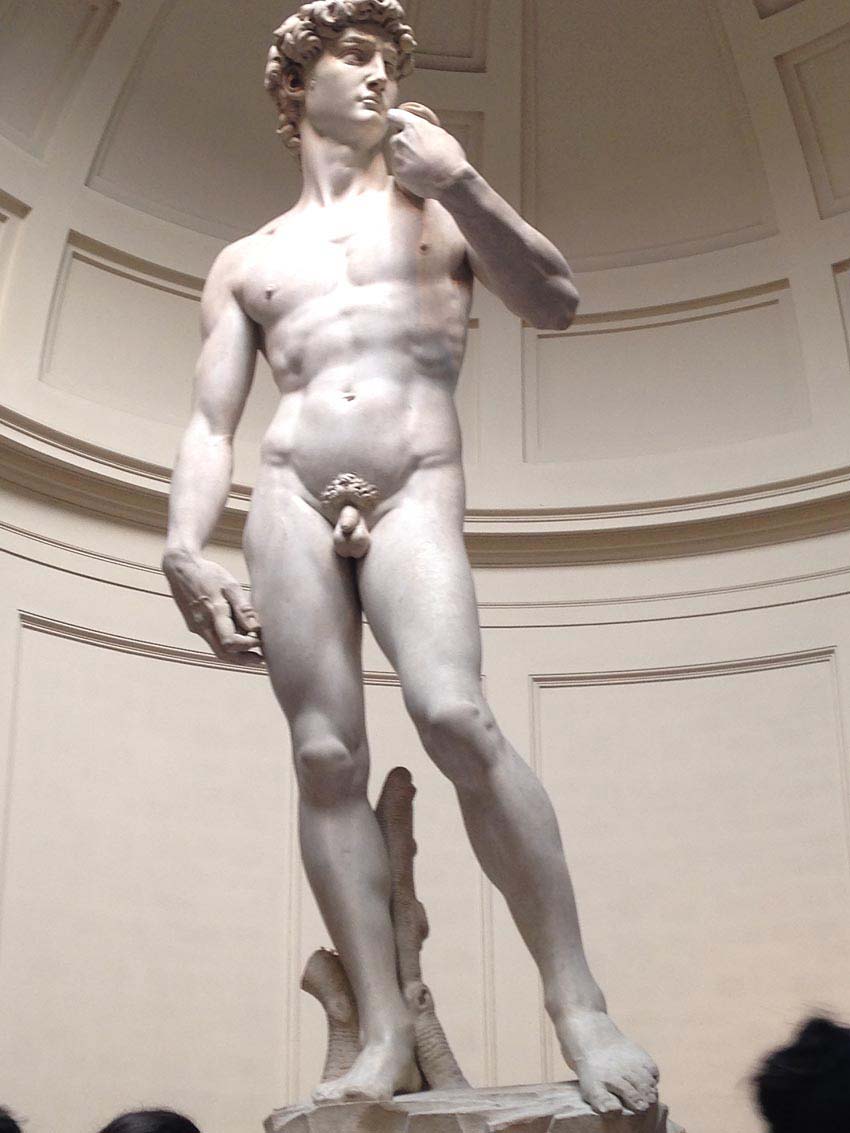Do you love art, wonder about its significance and want to learn about its history? Chennai-based art historian with more than 34 years of experience in teaching and more than twenty years of writing on modern and contemporary art, shares everything you need to consider before taking up the art historian career path.

1. Art Historian Career Path
The role of an art historian as a teacher/ associate professor includes teaching art history, various studio praxis courses and design. Other than this, art historians are also involved in art critique, art history journalism or blogging, art curation, etc.
Job responsibilities involve a minimum number of teaching hours per week such as 16-18 hrs. Teaching happens at the Graduate, Post Graduate and M. Phil levels. Under the semester system, which requires a component of continuous assessment, then it was my responsibility to craft question papers that would test the student’s level of comprehension of fundamentals of the theory subject, capacity to write short and long essay with good command of English.
For studio practice, course assignments are designed to test the ability of the students’ creative and original approach in painting or design. My skill sets were mainly towards rethinking approaches to teaching methodology in art history, for instance through power point presentations, questioning students through lectures on certain aspect of art history by asking them to make connections and relating to other cultures, in order that students comprehend the meaning of the creation of an art object within a certain culture and its capacity to be different from others.
In the design practical course, I was tasked to offer exercises for the elements of design so that student comprehends the quality and character of every element such as line and shape etc., manifest in it and its application in a particular development of the design whether in textile or graphic design.
Contents: Jump to Section
1.2 Social Image
1.3 Reasons to Become an Art Historian
2.2 Physical Demands
2.3 Psychological Demands
3.2 Related Hobbies to Take Up
3.3 Related Movies/ TV Shows
3.4 Related Fiction to Read/ Novels
4.2 Traveling Required
4.3 Average Workday/What to Expect
5.2 Threats from Automation
5.3 Common Reasons for People to Quit
1.1 Industry Sector for an Art Historian
Academician & Curators in private or government sector
Art historians are offered employment by the academia, beginning as a lecturer to working their way up as a professor and eventually a head. There are also opportunities for teaching art in schools. Our expertise can also be used in the advertising industry, textiles, animation, galleries and museums.
Art historians can work as:
- Professors of art history in colleges or universities
- Art Critics
- Authors
- Art museum curator

1.2 Social Image of an Art Historian
Extremely respectable
As soon as you introduce yourself as an art historian, you get all the attention from people as it is an extremely respectable and valuable profession socially.
Academician, Art historian, Art Critic, Curator, particularly within our country are quite rare, even though there are a great number of artists. Due to their incredible observation and communication skills, art historians can easily get connected to people around them. Also, being in the art field is globally recognized and you can go anywhere in the world for jobs.
1.3 Reasons to Choose the Art Historian Career Path
Passion, interest and love for the subject.

For me, it was my passion towards art and teaching, which resulted in me taking up this profession; and continues to be extremely gratifying even today. It was my institution where I studied namely the Department of Fine Arts, Stella Maris College (Autonomous) Chennai, obtaining B.A. (in the 1970s it was just a three-year course) M.A. and M. Phil from the Department, which gave me the opportunity in taking up teaching.
The salaries are very good, it offers opportunities to excel in creative endeavors. Job satisfaction in terms of students successfully taking up careers later in areas of their interest is another reason. Creative fulfilment is at the heart of this profession.
2. What it Takes to be an Art Historian
2.1 Key Personality Traits Required for an Art Historian Career Path
Memory, communication & good vocabulary
The key trait required in teaching Art History is the blessing of a good memory, in order to remember dates of each and every period of civilization and the birth and death dates of seminal artists throughout the art history. Above all, communication skills are extremely important, otherwise the history of art is lost on students.
This is a profession which requires a good command of the English language, a reading habit to absorb new words and increase the vocabulary related to art and its allied subjects.

A good, pleasant personality, with meticulous dressing and artistically too I feel is the important requirement of this profession. Not many would agree on it, but I talk out of my experience and my attitude towards dressing and presentation of myself before students.
You also need to be meticulous in gleaning out important facts that reach the students in an interesting manner. I made it a practice to read the cultural context of any art movement or civilization and particularly about the life of the artists with their failures and success that was something I found had the students glued to the lecture and their artistic productions.
A friendly disposition towards students without discrimination of caste or class, intellectual ability and creativity, endears the teacher to the students.
2.2 Physical Demands
Long standing hours
Depending on the individual approach of the teacher, the lecture may be delivered sitting or standing. Sitting and lecturing is total anathema. So, it does make physical demands of long hours of standing especially while lecturing for two hours at a stretch.
Standing and communicating helps have a grip on the students and most vitally, one cannot think well while sitting. Supervision of individual students during design courses, which would be a session of three hours, requires walking around the classroom/studio, talking, discussing and interacting with them.
In addition, every faculty member is required to invigilate the end of semester examinations. One of the conditions of supervision is to walk continuously while invigilating. This takes a toll physically on you.
2.3 Psychological Demands
Handling pressure, meeting students and parent’s expectations
There are numerous psychological demands. Teaching does not end with classroom lecture. The work continues at home in terms of preparation for the next day classes, which involves not one subject of art history but more. Teaching M.A students demands more of reading and gaining knowledge, which at times is extremely tedious and tiring.
But I had developed methods to override these stresses through indulgence in other creative activities. This opened avenues for me in fashion and jewelry designing. I took to doing crochet which was very meditative and was able to maintain my sanity and interest. Cooking was another option that served as a stress buster.
Pressure mounts when it comes to tests and assignment corrections. Students’ expectations that their answers sheets should be evaluated within a week of submission is definitely huge. Systematic and meticulous approach to every academic activity makes work a pleasure, to the extent that you will enjoy the corrections and never feel like it is a burden. Social life becomes very limited.
It is difficult to take time off during mid semesters or even during holidays since a lecturer’s job requires commitment all through the year, as there are administrative activities and work which have to be looked into, too.
3. How to Build Interest in Art Historian Career Path
3.1 Extra-Curricular Activities Recommended
I believe that a holistic development that is intellectual, emotional and physical is essential. Choose a field that you are truly interested in and follow it with utmost passion. Learn music, dance, drama, photography or drawing to enhance creativity and intellectual ability of the students to think differently and approach problems in an innovative way.
3.2 Related Hobbies to Take Up
Playing a physical sport would be a great hobby to indulge in, as it gives the student an ability to correlate various aspects and dimensions of life. Mental agility increases, they learn time management as well as multi-tasking.
3.3 Related Movies/ TV Shows
Movies:
- Loving Vincent
- The Da Vinci Code
- Black Art in the Absence of Light
- The Mystery of Picasso
- Art School Confidential
TV Shows:
- Medici the Magnificent
- The Adventures of Picasso
Movies, TV shows and videos on art and artists are always important. In fact, I insist students to watch various shows so they can gain insight into the artist working process which is very inspiring. Young children, as a matter of fact, should be made to watch these shows for them to acquire information on the subject which may inspire them to move towards taking up this profession later.

3.4 Related Fiction Books/ Novels
- The Da Vinci Code
- Girl with a Pearl Earring
- The Birth of Venus
Reading of any kind remains the bottom line in any profession, be it fiction or nonfiction. It opens up the world of imagination and helps work in different ways. The words transform to a vision and this precipitates in sharpening the imagination.
Students should develop the skill of translating a word or an interesting episode into a creative expression, which gives them enough grist for their intellectual mill. Intelligence is extremely vital in this profession enabling the student to rethink an ordinary object into an extraordinary one. Sensitivity to their environment, ability to perceive and decode, experiences and internalization of facts and other data from nature or anywhere else are very crucial for this profession.
4. Life as an Art Historian
4.1 Part-time Options
Yes
Depending on the institution one is applying for, part time jobs are highly welcomed and encouraged as they provide an opportunity for growth.
4.2 Traveling Requirements
Excessive travelling

Teaching art history, painting or design mandates travelling. The works of art and architecture created across the world have to be experienced and not to be seen only in books.
The foundress of the Fine Arts Department Dr. Sr. Edith Tomory was a Hungarian F.M.M. (Franciscan Missionary of Mary) nun. I had the opportunity to work with her for one year when she was revising her first edition of the book titled “Introduction to the History of Fine Arts in India and the West”.
My close proximity to her led her to offering me advise on various aspect of life but the seminal advice she gave me was that ‘art must be experienced’. She had travelled widely in Europe and studied many monuments. When I entered the teaching profession, unfailingly I carried this advice, and influenced my superiors to make visits to various temples and other important monuments within the country.
Eventually this program of visiting monuments was built into the curriculum. Later in my career when I was heading the department, I took the initiative of offering European tours to look at the museums and monuments in different countries. This initiative was well received and I travelled with group of twenty students across the board of Fine Arts from 2006-2012.
4.3 Average Workday/ What to Expect
8-10 hours
Being an art historian and primarily in teaching profession, the timings are different from government or corporate office hours. The faculties are generally required to be half an early, which for me was at 8.00 A.M. A register is to be signed to mark our presence in the campus. Before the classes began, there was a morning assembly and the faculty members were tasked to conduct it and hence, I too, had to take morning assembly. This would happen twice in a year.
The classes began after this. Depending on the day and on my timetable, I would have a first hour class followed by a session of three hours for studio practice courses. For the theory courses there would be a fixed classroom with projector, but for practical classes I had to walk up to the studio which nevertheless was not far.
After the classes, I had made it a habit to set up or prepare my PowerPoint for art history classes in the library. In addition, I also took reference on the subject by accessing book in the library. Later, it was my library at home, which I had painstakingly built up served as my reference source.
After college hours there would be students requiring clarifications on the subject which I would help them with. At other times when art exhibitions happened in the city, I would visit not just as a visitor but as an art critic too, since I was freelancing with the newspaper The Hindu. The day sometimes would end by 2:30 or latest by 3:30.
In addition to these academic activities, there were administrative duties like attending general staff meeting, and as the Head of the Department I had to occasionally attend the Staff Council meeting, which invariably would go beyond working hours.
5. Future of an Art Historian Career Path
5.1 Retirement Prospects for the Career Path of an Art Historian
Writer & critic
In 2020 the retirement age was increased to 60 years. Frankly speaking, when retirement was staring in my face I was troubled as the question that kept popping in my head was ‘what next’. My focus and attention had always been on my art history teaching, and the possibility of taking up another job did not attract me.

Fortunately for me my Ph.D. research, which was centered on the modernity in Madras in the decades between 1960s and 1970s, opened up possibilities of writing monographs on individual artists. The requests either came from the artists themselves or from cultural organizations like Lalit Kala Akademi, Delhi or Kerala. Journals and magazines also invited me to write on modern and contemporary issues.
Other Opportunities
Opportunity to curate shows also came my way. NGMA Bengaluru invited me in 2017 to curate a show based on my Ph.D. thesis which got published as a book by NGMA. Subsequently, Delhi Art Gallery invited me to curate a similar show but from their collection, which took place in Mumbai in 2019.
My research was published yet again under the title of “Madras Modern: Regionalism and Identity”. From a personal perspective I achieved and fulfilled my aspirations for critical writing through artists’ catalogue essay of which I have written more than 250.
As for me, I continue with my occasional teaching, whenever invited to deliver a lecture here and there or to conduct short courses in Art History which I have been doing for the past seven years. There are also opportunities for online webinar where I was invited to deliver.
The South Asian department of Princeton University had invited me in 2021 to deliver a lecture on an aspect of Indian Miniature tradition. While there were other individuals who wanted focused lectures on different aspects of art to whom I obliged during the pandemic.
The future is certainly very bright and prospective depending upon the individual if they can handle various challenges.
5.2 Threats from Automation
No
As a matter of fact, it has opened new avenues for artists in their creative expressions.
5.3 Common Reasons for People to Quit the Career Path of an Art Historian
Marriage, freelancing
The only reason to quit the profession is marriage and the spouse is in another city or abroad. Or a change of heart occurs to take up paint and brush and become a freelance artist or an entrepreneur to run an art gallery or take up position in a museum.
.
Curated & Edited by Yashaswini Reddy (CareerNuts Staff)
Read next:
How to Become an Art Historian: Qualifications, Salary, etc.
If you’re creative, love art and its history, being an art historian can be a great choice. Ms. Ashrafi S. Bhagat, a Chennai-based art historian talks about the qualifications, courses, career prospects, and more on how to become an art historian!

Dr. Asharfi S. Bhagat is Art Historian, Art Critic, Author and an Independent Curator. She was the Former Head and Associate Professor of the Department of Fine Arts, Stella Maris College, Chennai. She obtained her M.A. and M. Phil. Degrees from the Department of Fine Arts of the same institution.
She completed her Ph.D. from the Department of Art History and Aesthetics, Faculty of Fine Arts, M.S. University, Baroda in 2005. Her thesis was titled “A Critical Study of Modernity in South India, with particular Reference to the Madras School 1960 and 1970s”.
She has written on modern and contemporary art in journals, artist’s monographs and has authored over 250 exhibition catalogues. She is the author of book “Sculptural Configurations: Retrospective Progressive” on nationally established Sculptors of Chennai, published by Oxford University Press, in April 2003. She was also the recipient of the Brew, “Woman’s Achievers Award” for her contribution as an Art Historian and Art Critic in March 2016.